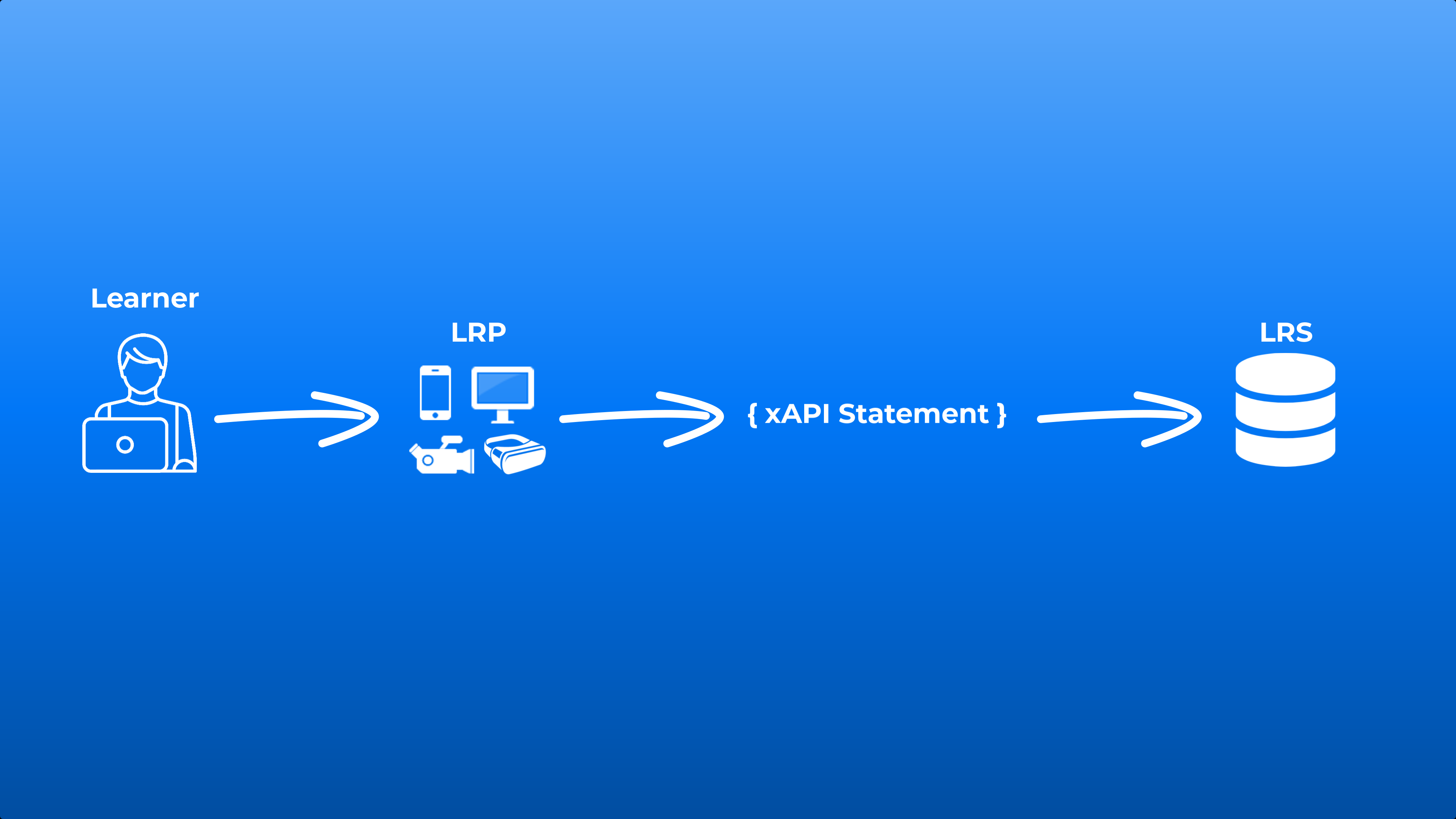What is the xAPI?
The Experience API (xAPI) is a technology standard that allows systems to store and retrieve data from a wide range of learning experiences. What does xAPI acronym stand for? The x stands for “Experience” and the API part of the acronym is also an acronym itself, which stands for Application Programming Interface. In a nutshell, an API is an agreed upon way for two software applications to programmatically communicate with one another.
Here are some key points to understand and remember about xAPI:
1. It specifies an API for tracking learning experience data. The data is managed via a RESTful web service that allows authorized applications to store and retrieve the data.2. It is an official IEEE standard, which documents a structured data model and how to use the API: https://standards.ieee.org/ieee/9274.1.1/7321
3. Its data model uses a JavaScript Object Notation (JSON) representation of learning events.
4. It requires a conformant Learning Record Store (LRS) to store and retrieve the data in an interoperable manner.
History
The xAPI (formerly called the “TinCan API”) was originally created by the Advanced Distributed Learning (ADL) Initiative in 2011 for the US Department of Defense, but has achieved wide commercial success and adoption around the world. The ADL Initiative also created SCORM and has a long history of establishing distributed learning policy, modernization, and technical guidelines in coordination with government and industry. The SCORM was created to enable content interoperability and reporting of formal courses within an LMS. In comparison, the xAPI was created to enable data interoperability and reporting of any type of learning experience or performance (not just self-paced courses). The xAPI became an IEEE Standard and was formally published as the “IEEE Standard for Learning Technology--JavaScript Object Notation (JSON) Data Model Format and Representational State Transfer (RESTful) Web Service for Learner Experience Data Tracking and Access” on October 6th, 2023. Veracity’s Jono Poltrack chaired the IEEE standardization effort and many members of the Veracity team were instrumental in contributing to the xAPI since its inception as a technical specification at the ADL Initiative in 2011. Veracity Learning became the first xAPI 2.0 conformant LRS in 2023!
What is it Used for?
The key thing to understand about xAPI is that it is a learning technology standard that enables recording data about any type of learning experience, which enables all types of new big data analytics and exciting new opportunities for measuring learning and performance. The xAPI was created to address the fact that there’s a need to collect data to measure and evaluate all types of learning and performance outcomes. Today’s workforce often uses many other resources besides completing courses in an LMS for learning. Mobile apps, simulations, games, and videos are examples of different forms of learning technology and interactions that also need to be measured and evaluated. The xAPI is also largely focused on data interoperability and sharing that data with other consumers of the data, and is silent on how the content is packaged or moved around in an LMS.
xAPI data can be used to motivate learners by showing them their progress vs others. It can be used to provide insights and dashboards to instructors, coaches, or facilitators so they can help struggling learners before they fall behind. It can be used for both formative and summative assessment and feedback, providing insights about the effectiveness of the content so it can be improved over time.
How Does it Work?
The primary type of xAPI data is captured and stored in the form of what’s called a Statement. The Statement is generated by a Learning Record Provider (LRP) after an event or interaction takes place with the content. An LRP is any device or application that captures and sends xAPI data. The xAPI data is required to be stored in a Learning Record Store (or LRS), which is the data storage and server-side component of xAPI.

xAPI Statements
The structure of an xAPI Statement must at least have an Actor, Verb, and an Object. The Actor, Verb and Object part of a Statement resembles a basic English sentence but is represented as JSON data, which is a computer readable format, similar to other types of structured data such as XML.
In addition to the Actor, Verb, and Object, a Statement can also include additional information about the Result (learning or performance outcomes) and Context (additional context in which the experience occurred) as well as the timestamp (when it occurred) and additional binary attachments.

xAPI Resources
• ADL’s xAPI Overview, History, and Resources, https://adlnet.gov/projects/xapi
• Official List of Conformant Learning Record Stores, https://adopters.adlnet.gov/products/b576d23b-ebd2-4e12-98c9-d07e88aa907d
• The IEEE xAPI 2.0 Standard, https://standards.ieee.org/ieee/9274.1.1/7321
• Impacts between xAPI version 1.0.3 and version 2.0.0, https://standards.ieee.org/ieee/9274.1.1/7321
• Veracity’s xAPI Ultimate Developer Resource List, https://veracity.it/xapi_developer_ultimate_resource_list
• Veracity’s xAPI and LRS Tips (YouTube Channel), https://www.youtube.com/@VeracityLRS/playlists
• Rustici Software’s xAPI.com Resource, https://xapi.com
• Best Practices for xAPI Statements, https://www.learningguild.com/articles/10-best-practices-for-xapi-statements

